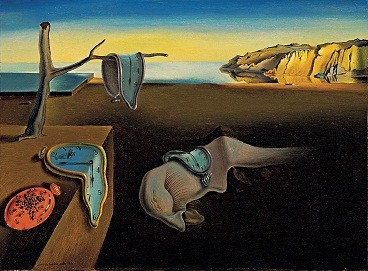Blog Post #2: Art Analysis
Blog Post #2: Art Analysis
John Slowiak
Salvador Dalí (1904-1989)
The Persistence of Memory. 1931 (oil on canvas)
Salvador Dalí's 1931 The Persistence of Memory, also known informally as the Melting Clocks, is a work of art that I enjoy and was the first thing that came to mind for this assignment. One of the surrealist's most notable works, the piece features various art elements and values.
Tone is the primary element that sticks out to me in The Persistence of Memory. Even though the shapes and placement of these shapes is critical to the piece (which we'll get to), the shading and shadows are what really make the image feel alive. Form the barren brown in the foreground to the beautiful Mediterranean coastline in the background, the shading creates a real setting for the image to breathe in. The shadows on the famous 'melting clocks' also make them appear truly malleable, adding another dimension to the painting we see.
As mentioned, shape is also a principle artistic element in The Persistence of Memory. While tone creates the backdrop for the image, the shapes within are what the viewer will notice first. The melting clocks are the centerpiece of this, with their softness serving as a stark contrast to how we view time day-to-day. Seeing something we naturally expect to be hard and rigid, like a clock or watch, in such a weeping and vulnerable state, is the twist Dalí adds to his surrealist piece. Beyond the clocks, we see a much more abstract shape resembling a portion of a human face off-center, which some believe to be a self-portrait by Dalí. The crisp eyelashes melting into the warm skin, while another melting clock rides atop like a saddle, add a life-like element to an otherwise much more natural image.
The final artistic element I'll discuss for The Persistence of Memory is color. The viewer is not blown away by a wide palette of colors in the piece, as most of it consists of browns, grays, and blacks. However, these otherwise 'dull' colors accentuate the important pieces of the image; the gold outline of the clock on the table, the amber backside of another stopwatch, and the beautiful seascape in the back. Dalí shows that color does not need to be extravagant to be noticed. As long as the different pieces work together and make each other stand out, an amazing painting like The Persistence of Memory can come to fruition.



Comments
Post a Comment